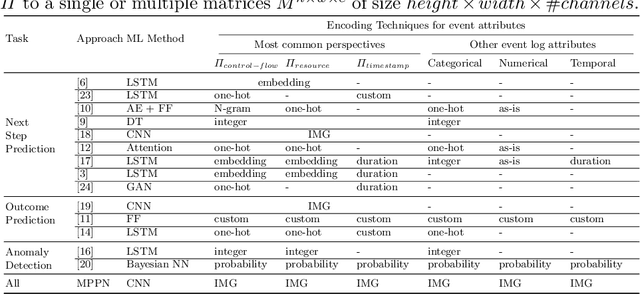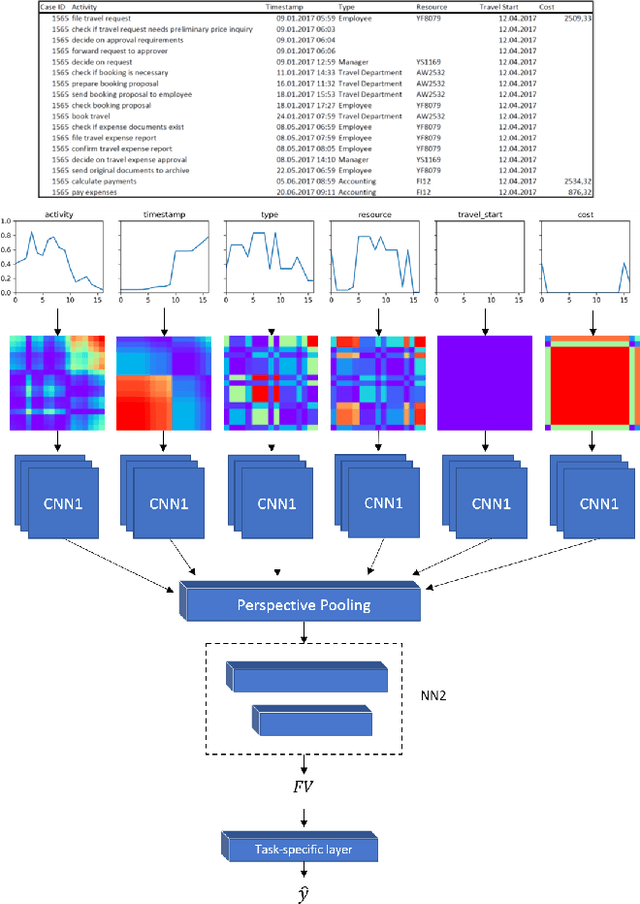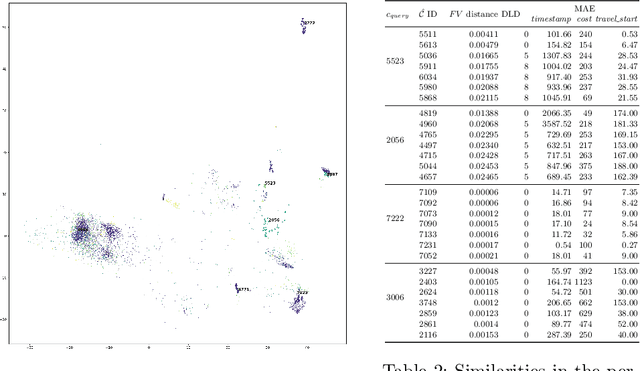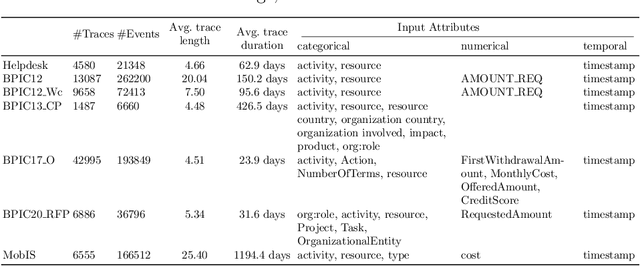Peter Pfeiffer
A Discussion on Generalization in Next-Activity Prediction
Sep 18, 2023Abstract:Next activity prediction aims to forecast the future behavior of running process instances. Recent publications in this field predominantly employ deep learning techniques and evaluate their prediction performance using publicly available event logs. This paper presents empirical evidence that calls into question the effectiveness of these current evaluation approaches. We show that there is an enormous amount of example leakage in all of the commonly used event logs, so that rather trivial prediction approaches perform almost as well as ones that leverage deep learning. We further argue that designing robust evaluations requires a more profound conceptual engagement with the topic of next-activity prediction, and specifically with the notion of generalization to new data. To this end, we present various prediction scenarios that necessitate different types of generalization to guide future research.
Multivariate Business Process Representation Learning utilizing Gramian Angular Fields and Convolutional Neural Networks
Jun 15, 2021



Abstract:Learning meaningful representations of data is an important aspect of machine learning and has recently been successfully applied to many domains like language understanding or computer vision. Instead of training a model for one specific task, representation learning is about training a model to capture all useful information in the underlying data and make it accessible for a predictor. For predictive process analytics, it is essential to have all explanatory characteristics of a process instance available when making predictions about the future, as well as for clustering and anomaly detection. Due to the large variety of perspectives and types within business process data, generating a good representation is a challenging task. In this paper, we propose a novel approach for representation learning of business process instances which can process and combine most perspectives in an event log. In conjunction with a self-supervised pre-training method, we show the capabilities of the approach through a visualization of the representation space and case retrieval. Furthermore, the pre-trained model is fine-tuned to multiple process prediction tasks and demonstrates its effectiveness in comparison with existing approaches.
 Add to Chrome
Add to Chrome Add to Firefox
Add to Firefox Add to Edge
Add to Edge